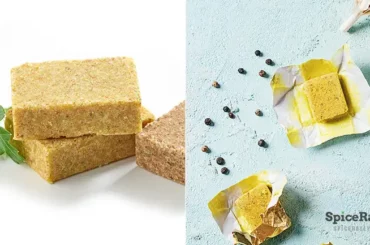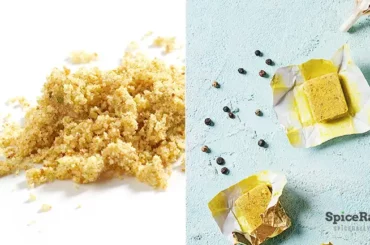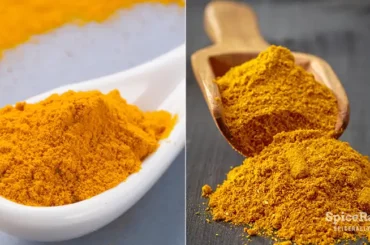While walking down the aisle at the grocery store you may notice a variety of different seasoning choices for Mexican-inspired dishes. If you pick up a packet of taco seasoning and fajita seasoning you may have a hard time distinguishing the two. So what is the difference between taco seasoning and fajita seasoning?
While fajita seasoning and taco seasoning are very similar in ingredients and seasoning, there is a slight difference between the two. Taco seasoning often has a little bit more heat and often has a higher ratio of chili powder. While Fajita seasoning is milder and often includes a citric component.
In this article, we will look at both taco seasoning and fajita seasoning in depth. Comparing their uses, ingredients, and other useful information.
Which Ingredients are Used to Make Taco Seasoning?
While the ingredients in fajita and taco seasoning are very similar, it’s the proportions of each of those ingredients that make the difference.

Everyone makes their taco seasoning a little differently. However, a common taco seasoning recipe is:
- 1 Tbsp. chili powder
- ¼ tsp. garlic powder
- ¼ tsp. onion powder
- ¼ tsp. dried oregano
- ½ tsp. paprika
- 1 ½ tsp. ground cumin
- 1 tsp. salt
- 1 tsp black pepper
- Pinch of red pepper flakes
If you are interested in discovering more about taco seasoning, click here to learn all about the spices used in taco seasoning.
Which Ingredients are Used to Make Fajita Seasoning?
A lot of the same ingredients used in the taco season are also used in the fajita seasoning, pay close attention to the difference in the proportions of each recipe used.
- 2 tsp. chili powder
- 1 tsp. paprika
- ½ tsp. ground cumin
- ½ tsp. garlic powder
- ½ tsp. onion powder
- 1 tsp. dried oregano
- 1 tsp. salt
- 1 tsp. sugar
- 1/ tsp. cayenne pepper
As you may have noticed, the taco seasoning uses a lot more chili powder than the fajita seasoning compared to the rest of ingredients. Additionally, it uses ingredients like black pepper and red pepper flakes to add more heat.
In comparison, the fajita seasoning uses a lot less chili powder and more of the other spices like garlic powder and onion. It also includes sugar to sweeten the spice and break up the heat.
How Do You Store Homemade Taco Seasoning?
Taco seasoning should be stored in a cool, dry place. A kitchen cabinet will work fine as long as it isn’t above the stove or oven.
Your seasoning should be stored in an airtight container. A mason jar, OXO container, plastic container, or even zip lock bag will work well. If you plan on keeping a stash of homemade taco seasoning stored at all times, it’s better to go with the more expensive option.
If stored properly, taco seasoning will last up to six months.
How Do You Store Homemade Fajita Seasoning?
Fajita seasoning can be stored the same way taco seasoning is stored. As long as it doesn’t get hot or damp it will last up to six months as well.
What is the Difference Between a Taco and a Fajita?
In order to understand why the two dishes are flavored differently, it’s important to understand the different intentions behind the dishes.
Fajita literally translates to “little belt” and is in reference to the meat being served. It originally only referred to skirty steak, but the US has Americanized the fajita to include chicken and seafood as well.
The key to a good meal is simplicity and the right seasoning
Buddy Valastro
The word taco means “wadding” or “plug” and refers to how the tortilla is folded over the filling. Traditionally, tacos are filled with ground beef, beans, eggs, pieces of meat, fish, or pretty much anything.
Ironically, you can actually have a fajita taco. Which is fajita meat, served in a taco shell. Additionally, while fajitas are often served with soft shells, you can actually eat fajitas with no shell at all.
How Do Store-Bought Taco and Fajita Seasoning Differ in Flavor?
While the homemade taco and fajita seasonings don’t differ too much in ingredients, the same cannot be said about store-bought taco and fajita seasoning.
Store-bought fajita seasoning will often include a souring agent like tomato powder or citric acid in order to give a more citric flavor.
Alternatively, chefs who make their own version of the seasoning achieve the citric flavor by adding a squeeze of lime to the fajita meat during the cooking process.
How Much Homemade Taco Seasoning is Equivalent to a Taco Packet?
Taco seasoning packets usually have about 2 Tablespoons of seasoning per pound of meat. Therefore, homemade seasoning typically produces more than enough seasoning for one meal. Fajita seasoning packets often provide a similar amount.
Are Taco Seasoning and Fajita Seasoning Interchangeable?
Since taco seasoning and fajita seasoning have very similar ingredients they can be used interchangeably. However, there are some exceptions.
If you are using taco seasoning in place of fajita seasoning, it may be a little too hot on its own. To reduce some of the heat try adding a little bit of sugar and a squeeze of lime.
If you are using a store-bought version of fajita seasoning instead of taco seasoning it may be too acidic for your liking. To reduce the acidity, you can add baking soda or sugar. You can also kick up the heat a little by adding more chili powder or red pepper flakes.
Which Dishes Use Taco Seasoning?
Taco seasoning can be used in so much more than just tacos. Here are some popular dishes that use taco seasoning to kick up the heat:
- Taco Dip – sour cream, cream cheese, salsa, cheese and a packet of taco seasoning go a long way.
- Taco burger – try mixing taco seasoning with ground beef when forming a burger patty. You can top your burger with typical taco toppings and even replace the bun with a tortilla.
- Taco Barbeque – Try replacing a barbeque rub with taco seasoning. It provides nice heat that can’t be replicated.
- Taco Pasta – Mixing taco seasoning into a traditional pasta sauce can add variety to a meal without too much effort. Try topping your pasta with Mexican cheese and black olives.
- Taco Pizza – You can simply top your pizza with meat that has taco seasoning or add some taco seasoning to the pizza sauce. Topping with jalapenos, lettuce, tomato, and Mexican cheese make for a great meal.
Taco seasoning includes a mixture of species that are commonly found in a lot of dishes. Try replacing the spices with taco seasoning for a more kicked-up version of any dish.
Which Dishes Use Fajita Seasoning?
Since fajita is intended to bring out the flavors of the meat it’s a little less versatile than taco seasoning. However, it can be used on most proteins. Some dishes it is commonly used on include:
- Blackened Shrimp – Blackening shrimp with fajita seasoning, onions, and peppers make a great simple meal. The acidic taste of fajita seasoning compliment the shrimp well.
- Lime Salmon Fajitas – A great way to add a unique flavor to baked salmon is by sprinkling some fajita seasoning on top with lime and garlic.
- Chicken Fajita Pasta – Try adding chicken with fajita seasoning to a pasta alfredo. Mixing in some onions and bell peppers really add some flavor.
While experimenting with fajita seasoning maybe a little more difficult than taco seasoning, it tends to work well in any dish that could use a sweet heat or a citrus flair.



